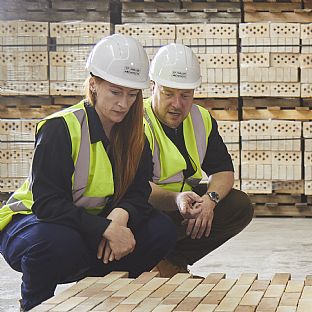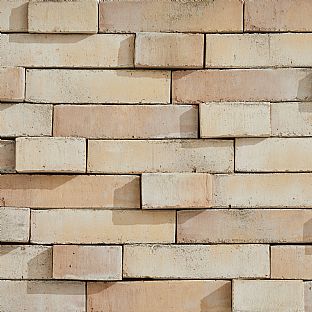MIX Helps Safeguard a Classic Danish Material
Brick and clay tiles are not only part of C.F. Møller Architects’ DNA but also a cornerstone of Danish architectural heritage. Across the country, historic and beautiful brick buildings stand as proof of their ability to withstand weather and architectural trends. According to the brick manufacturer, it is essential that we dare to rethink and develop the material to ensure that future generations can also benefit from its many qualities.
– “The secondary materials are incorporated into a product with a lifespan of over 100 years, keeping them in circulation for a long time. We need to use more secondary materials and ensure the reprocessing of materials. Future construction calls for innovation. For us, it is about continuously exploring what can be reused and incorporated into new products. That’s why we are also testing other types of construction waste as recycled material,” says Kristian Knorr Svane.
With MIX, the architects and egernsund wienerberger have created a brick that celebrates architectural heritage while uniting aesthetics, durability and circular thinking:
– “We want to safeguard a classic Danish material that allows us to continue designing buildings that can stand for hundreds of years. Our ambition has therefore been to create a more resource-optimised brick for future construction. We have succeeded in that, and we are extremely pleased with the result,” says Rune Bjerno Nielsen.
Facts about MIX
Recycled material
MIX is a new brick series that replaces sand and virgin raw materials with more than 30% secondary mineral material. The recycled content in MIX consists of crushed masonry from demolished buildings and construction sites. This is residual waste that cannot be reused directly in new construction. The recycled material has a CO₂ footprint 77% lower than virgin sand in extraction and transport.
The recycled material replaces sand, which is a scarce resource. Whereas sand normally accounts for around 15%, egernsund wienerberger has doubled the proportion by using over 30% secondary material. This also reduces the amount of virgin clay that needs to be extracted.
MIX is an evolution of LESS
MIX is a further development of the dematerialised LESS brick, which contains 15% less raw material and has a correspondingly lower CO₂ footprint. When MIX bricks are produced as dematerialised LESS bricks, the consumption of virgin materials is reduced by more than 40% compared with a traditional solid brick. According to egernsund wienerberger’s EPDs, this results in a CO₂ footprint 13–20% lower than the company’s standard brick range using the same clay blends. The MIX series therefore has a GWP (Global Warming Potential) of 7.1 kg CO₂e/m² during production (A1–A3).
Points in DGNB
MIX can also contribute to compliance with the EU taxonomy, and in the DGNB 2025 manual for renovation and new construction, points are awarded for reduced use of primary raw materials.
About egernsund wienerberger
egernsund wienerberger is the largest brick manufacturer in the Nordic region and part of the wienerberger Group. The company provides materials for future buildings and urban spaces, and its product portfolio includes bricks, shaped bricks, brick lintels and beams, brick slips, clay blocks and pavers.
egernsund wienerberger has more than 300 employees, four factories in Denmark and nine showrooms across the Nordics.
About C.F. Møller Architects
C.F. Møller Architects is one of Scandinavia’s leading architectural practices, with over 100 years of experience and a portfolio of award-winning projects in the Nordics and internationally. The studio works with architecture rooted in Nordic values, innovation and a holistic approach.
The company has around 300 employees and is headquartered in Aarhus, with additional offices in Copenhagen, Aalborg, Oslo, Stockholm, Malmö and Berlin.
egernsund wienerberger

